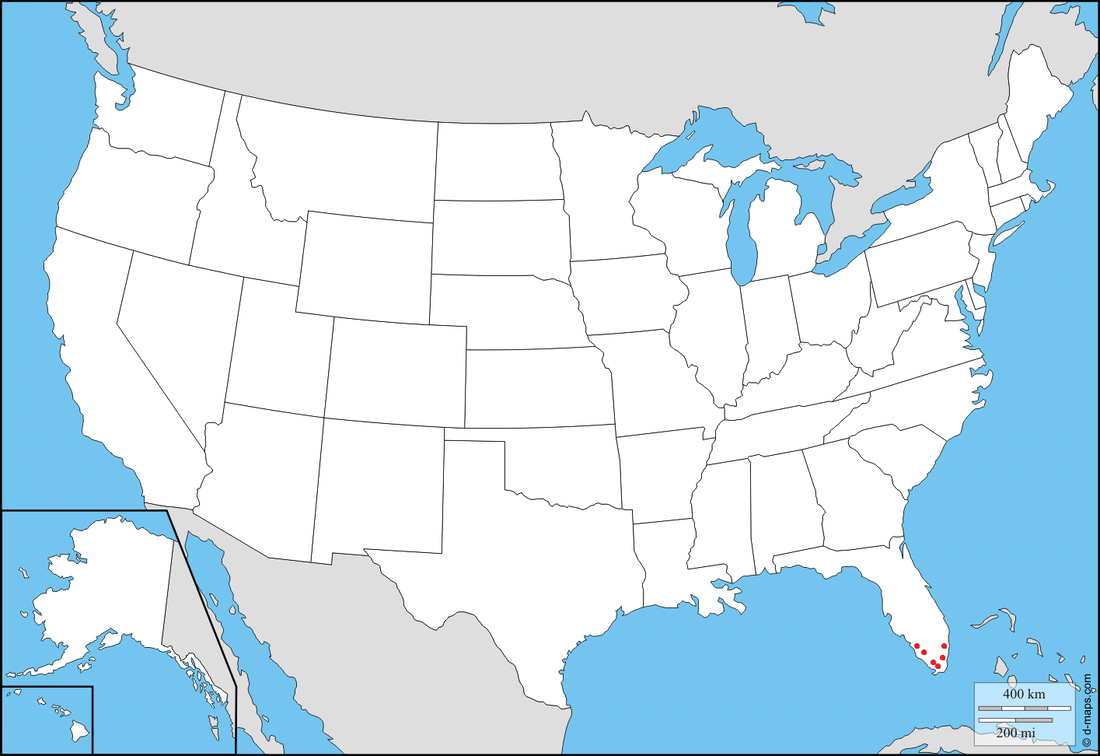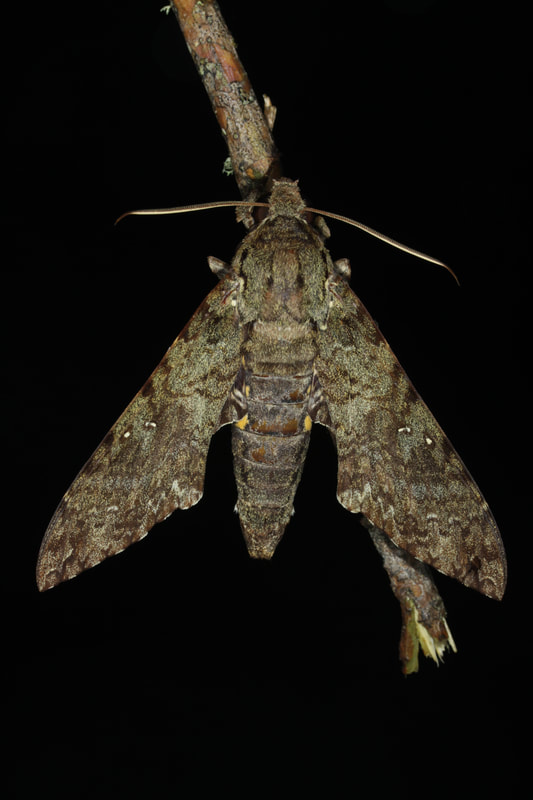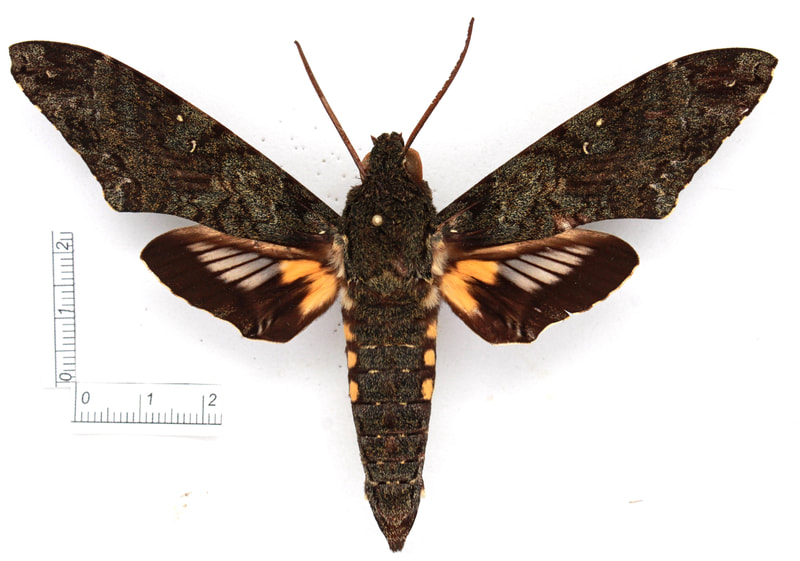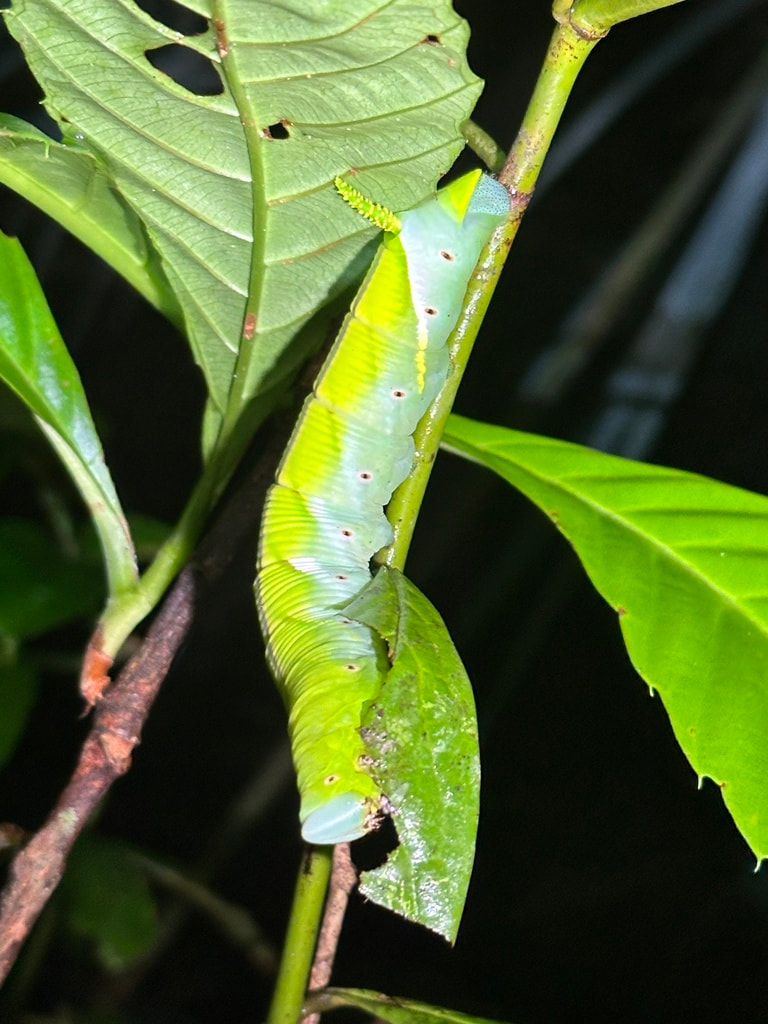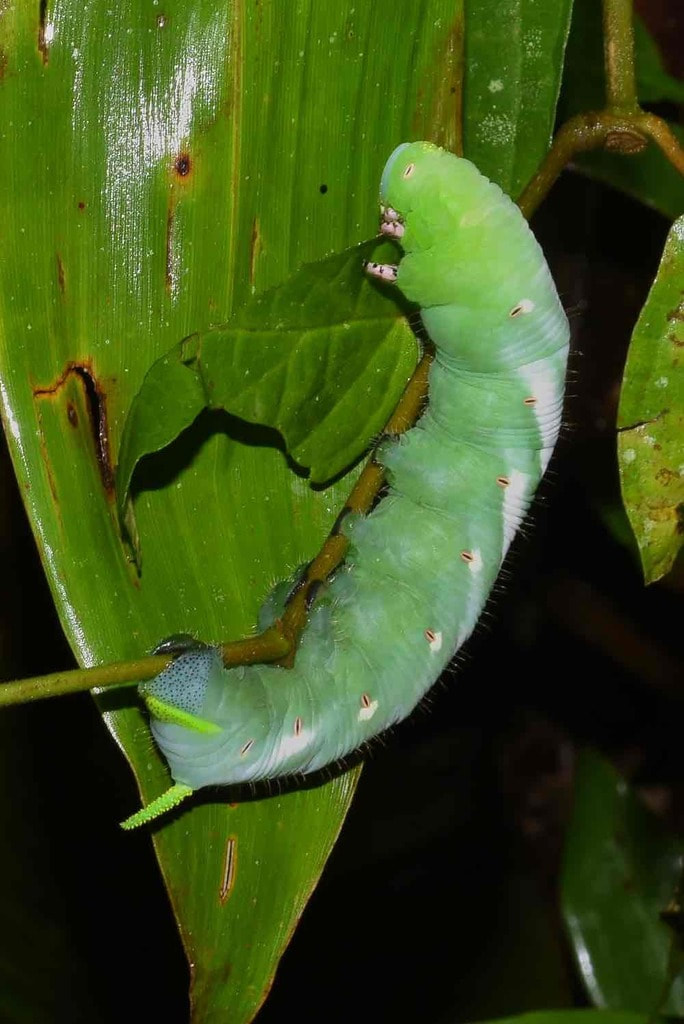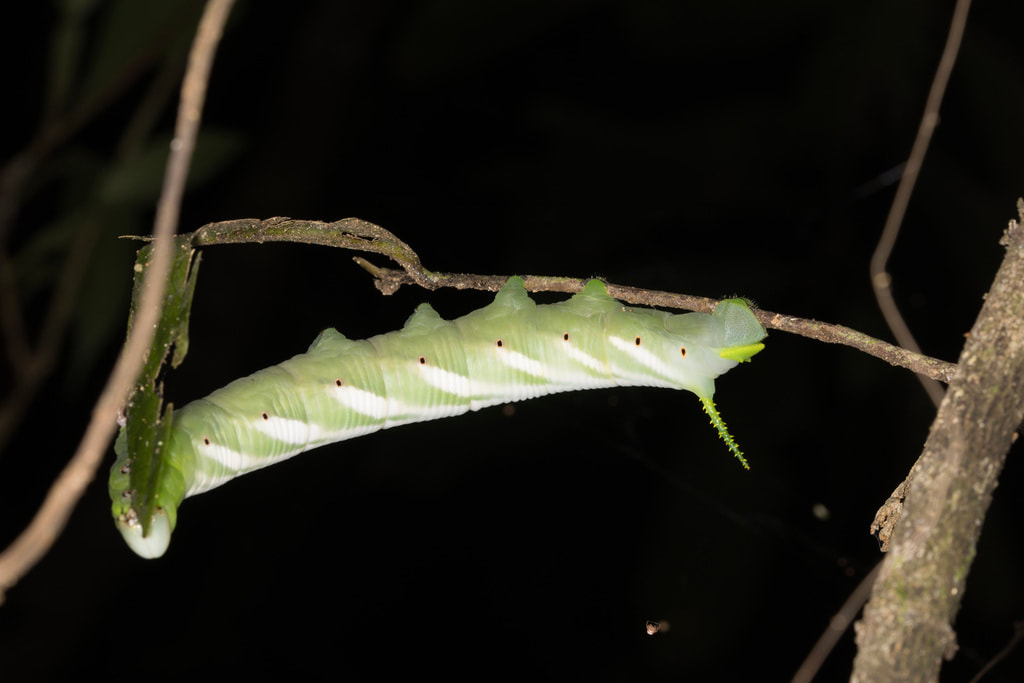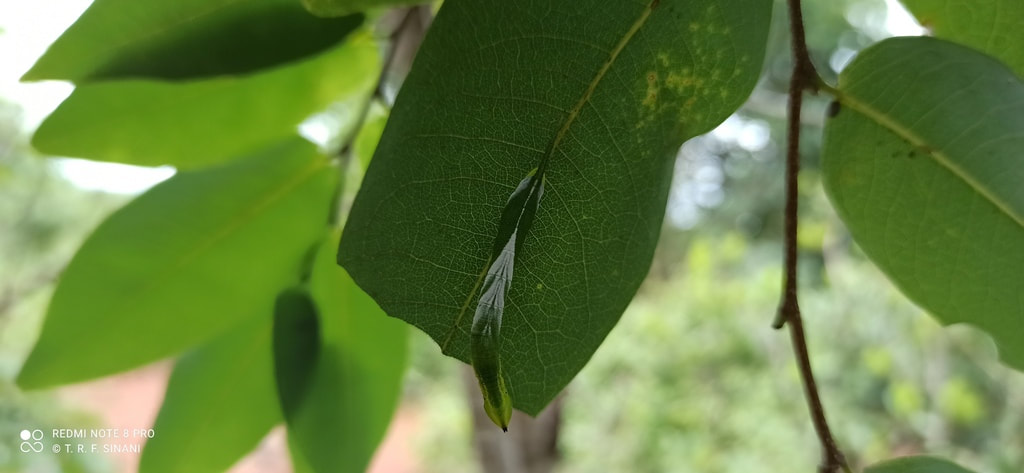|
Common Name: Duponchel’s Sphinx
Ecology and Life History: This moth is not a breeding resident in the USA. It has been recorded from Florida and Texas. In other parts of its range, it is found nearly year-round. This species is attracted to light. Both sexes will readily come to a light setup in the right habitat. This species is not sexually dimorphic. Females tend to be larger than males, but have the same maculation. Eggs are laid on the leaves of hostplants and larvae feed singly. Habitat and Searching for Larvae: This, like it’s relative Cocytius antaeus are Annonaceae feeders. Larvae can be found virtually anywhere on the hostplant. Larvae are likely present year round in the tropics. This species has larvae that almost certainly fluoresce under UV light, though it has not been shown yet. Rearing Notes: {COMING SOON} Hostplants: Click here to load this Caspio Cloud Database
Cloud Database by Caspio |
Adult Description: This is a large moth with a forewing size ranging from 58-80mm in length (2). The forewings have a blue-green sheen to them, particularly when examined in the light. This species is slightly smaller than the more commonly encountered Cocytius antaeus, and is distinctly more blue-green than that species. The hindwings of C. duponchel have a translucent patch in the center, with yellow at the basal area. The hindwings lack toothed projections into the translucent areas between the veins as are present in C. antaeus (2).
Larval Description: L5: The larva is bright green in color and smooth, with no hair. The horn is either greenish or sometimes bluish with heavy granulation. There is a dark red dorsal stripe. The larva has whitish diagonal striping near the spiracles, which turn progressively pale-blue in color as you reach the caudal horn. In some cases, the white/blue striping is bordered by a darker band of brown coloration. |
The gallery to the left contains photos of Cocytius duponchel adults. If you have a photo that you would like to submit to us, please contact us.
The gallery to the right contains photos of Cocytius duponchel larval and pupal stages. If you have a photo that you would like to submit to us, please contact us.
The gallery to the right contains photos of Cocytius duponchel larval and pupal stages. If you have a photo that you would like to submit to us, please contact us.


